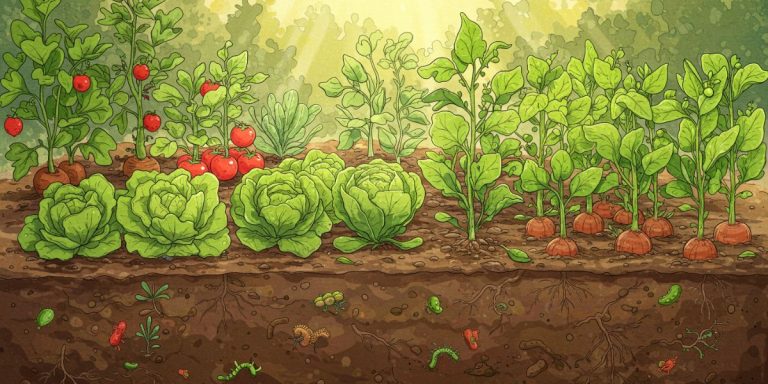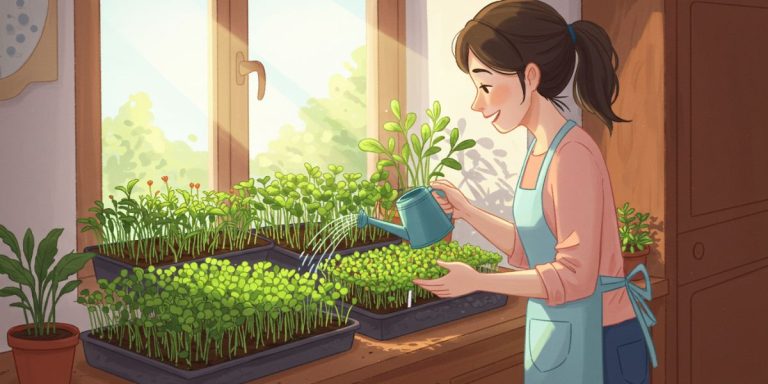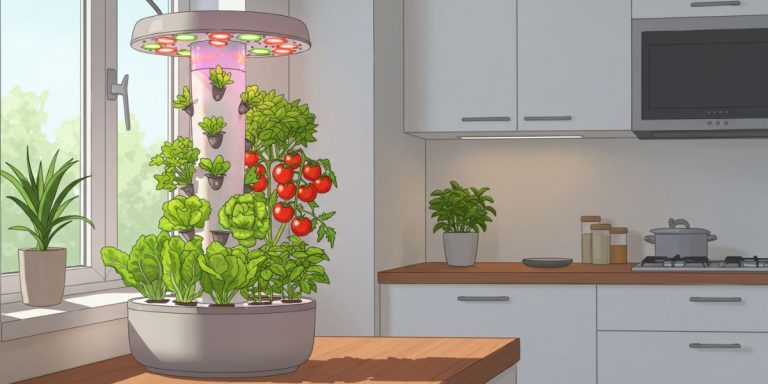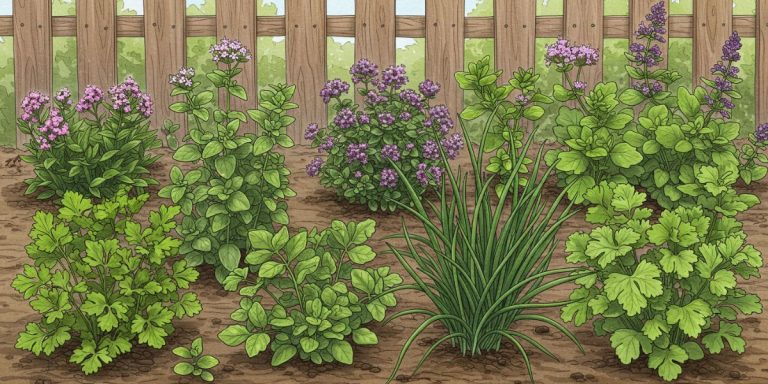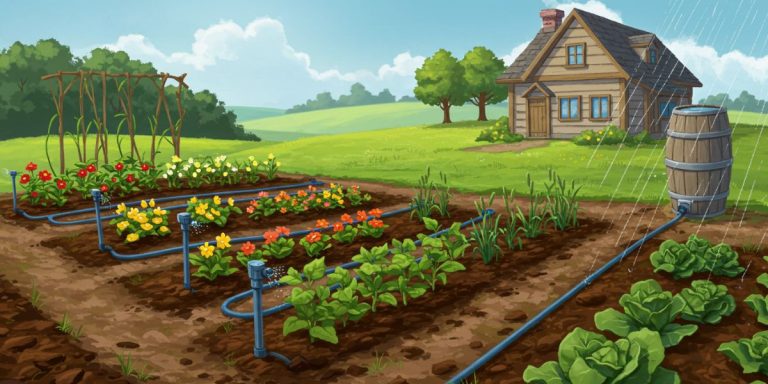Year-Round Gardening: Complete Guide to Never-Ending Harvests
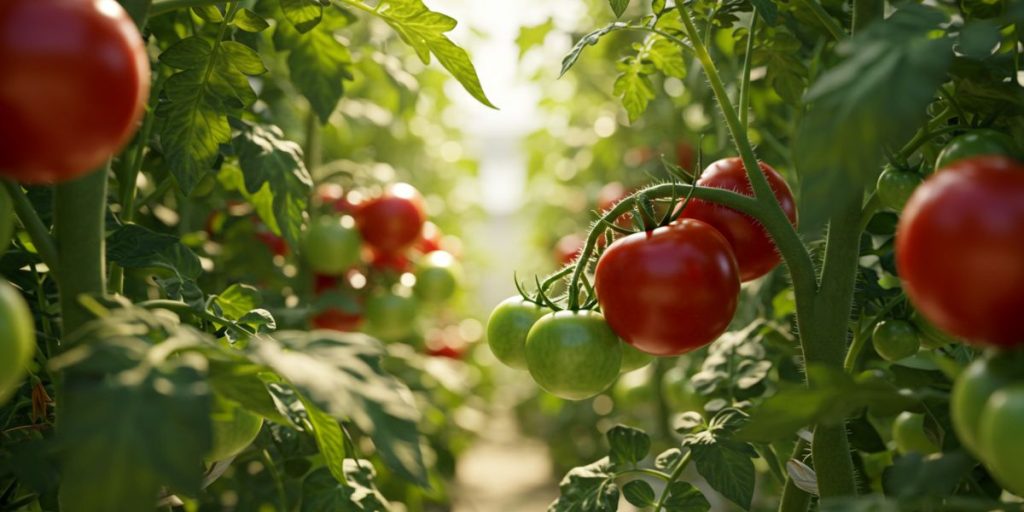
Introduction
Growing your own food year-round is one of the most empowering steps toward self-sufficiency. Unlike conventional gardening that focuses on a single growing season, year-round gardening allows you to produce fresh vegetables continuously, reducing your dependence on grocery stores and external food systems. This comprehensive guide will walk you through everything you need to know to establish and maintain a productive four-season garden, regardless of your climate or experience level.
I don’t consider myself an expert gardener by any means, but I have researched a ton and have years of experience growing food for my family.
This is a photo of my first-ever harvest: a few banana peppers and some purple bush beans. Look how cute! 🙂
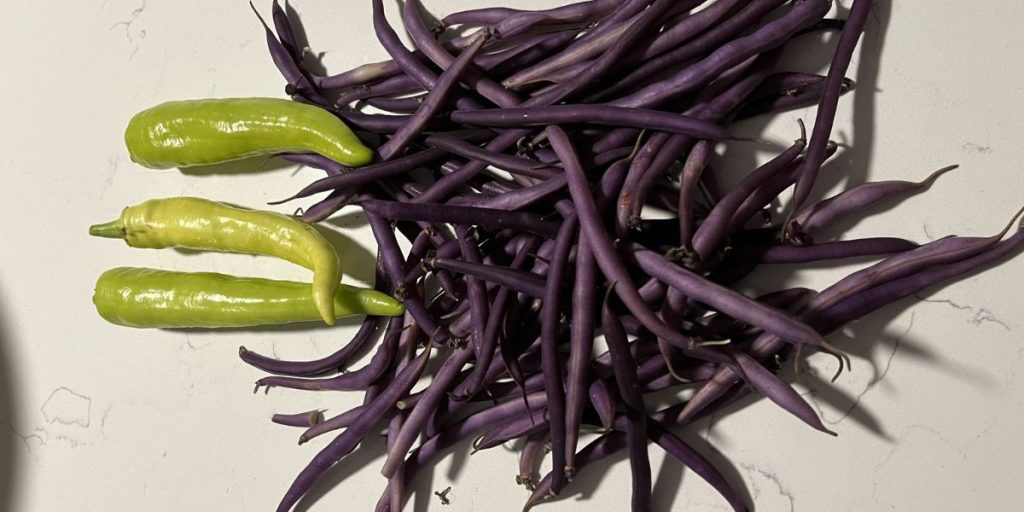
By implementing the techniques in this guide, you’ll be able to:
- Harvest fresh vegetables during every month of the year
- Reduce your grocery bills significantly
- Improve your family’s food security
- Connect more deeply with natural growth cycles
- Develop essential self-sufficiency skills
Understanding the Four-Season Approach
Traditional gardening follows the conventional growing season—planting in spring and harvesting through summer and early fall. Year-round gardening, pioneered by farmers like Eliot Coleman, extends this cycle through strategic planning, appropriate crop selection, and season extension techniques.
The Year-Round Garden: Four Gardening Seasons

Rather than thinking of just one growing season, a year-round approach recognizes four distinct growing periods:
- Spring (Early-Mid): Focus on cool-weather crops and starting summer crops
- Summer: Peak production of heat-loving crops
- Fall: Second cool-season crop cycle and preparation for winter
- Winter: Protected growing of cold-hardy crops and planning for spring
Each season offers unique opportunities for growing different vegetables, and successful year-round production depends on understanding these seasonal rhythms.
Planning Your Four-Season Garden
Site Selection and Layout

The foundation of successful year-round gardening begins with proper site selection:
- Sunlight: Choose a location that receives at least 6-8 hours of direct sunlight daily during the growing season. South-facing exposures are ideal.
- Proximity: Place your garden near a water source and your home for convenient access, especially important during winter months.
- Protection: Consider natural windbreaks or structures that can offer protection from harsh elements.
- Soil Quality: Select an area with well-draining soil that can be improved over time.
For year-round production, consider organizing your garden into permanent beds with dedicated purposes:
- Protected Beds: Areas where season extension devices will be placed
- Perennial Section: For long-lived food plants
- Rotation Beds: For annual vegetables following seasonal rotation
- Nursery Area: For starting seedlings and transitioning plants
Creating a Year-Round Planting Calendar
A detailed planting calendar is essential for maintaining continuous harvests. Create a personalized schedule that includes:
- Starting dates for seeds indoors and outdoors
- Transplanting timelines for seedlings
- Direct sowing periods for each crop
- Expected harvest windows
- Succession planting intervals
Your calendar should account for your specific climate zone and average first/last frost dates. Allow for overlap between seasons to ensure continuous production.
12-Month Gardening Seasonal Growing Guide
Spring Gardening (March-May)
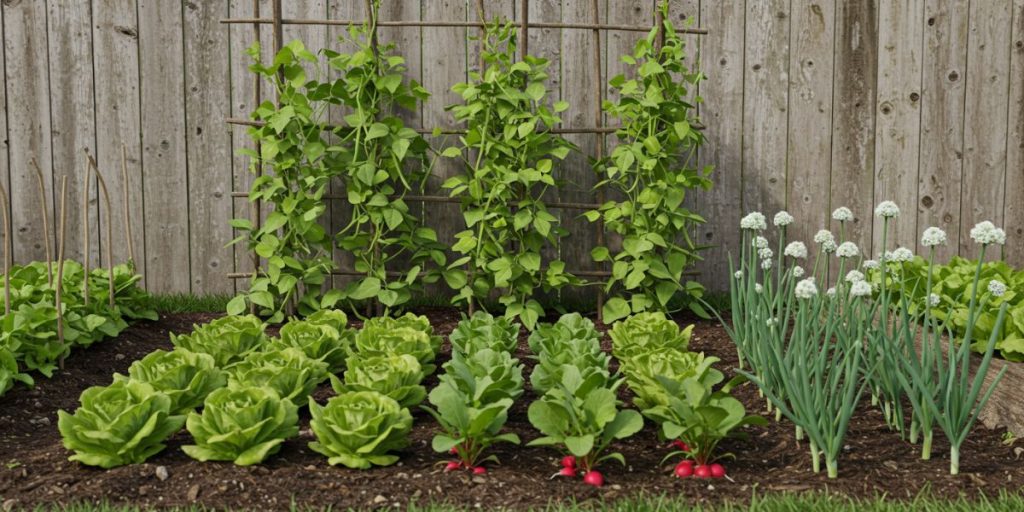
Spring marks the beginning of the main growing season and requires careful timing to maximize productivity.
Early Spring Tasks:
- Start heat-loving crops indoors (tomatoes, peppers, eggplants)
- Direct sow cold-hardy vegetables (peas, spinach, radishes)
- Prepare garden beds and repair winter damage
- Apply compost and soil amendments
Spring Crops to Plant:
| Vegetable | Starting Method | Days to Maturity |
|---|---|---|
| Lettuce | Direct seed/Transplant | 45-60 days |
| Spinach | Direct seed | 40-45 days |
| Peas | Direct seed | 60-70 days |
| Radishes | Direct seed | 25-30 days |
| Carrots | Direct seed | 60-75 days |
| Beets | Direct seed | 50-60 days |
| Kale | Direct seed/Transplant | 50-65 days |
| Broccoli | Transplant | 60-85 days |
Spring Growing Tips:
- Use row covers to protect early plantings from late frosts
- Start warm-season crops indoors 6-8 weeks before the last frost
- Practice succession planting with fast-growing crops
- Harden off seedlings before transplanting them outdoors
Summer Gardening (June-August)

Summer is peak production time for heat-loving crops and requires attention to watering and maintenance.
Summer Tasks:
- Transition to heat-tolerant varieties as temperatures rise
- Implement consistent watering schedules
- Apply mulch to retain moisture and suppress weeds
- Monitor for pests and diseases frequently
- Begin planning your fall garden while tending to summer crops
Summer Crops to Focus On For a Continuous Growing System:
| Vegetable | Starting Method | Days to Maturity |
|---|---|---|
| Tomatoes | Transplant | 70-90 days |
| Peppers | Transplant | 60-90 days |
| Cucumbers | Direct seed/Transplant | 50-70 days |
| Zucchini | Direct seed | 40-55 days |
| Beans | Direct seed | 50-60 days |
| Corn | Direct seed | 70-100 days |
| Eggplant | Transplant | 70-85 days |
| Melons | Transplant | 80-100 days |
Summer Growing Tips:
- Water deeply rather than frequently to encourage deep root growth
- Provide afternoon shade for cool-season crops in hot climates
- Harvest frequently to encourage continued production
- Trellis climbing plants to maximize space
Fall Gardening (September-November)
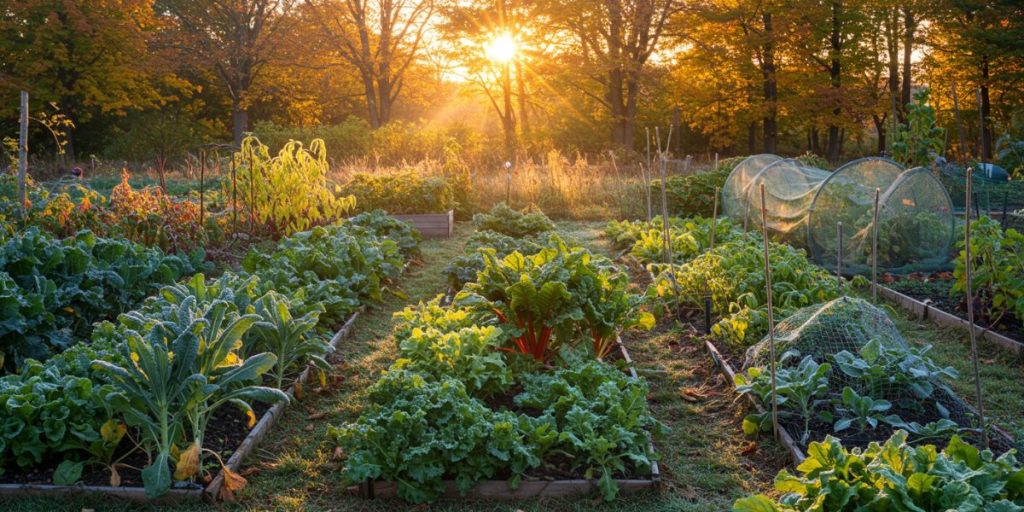
Fall offers a second cool-season growing window and preparation time for winter crops.
Fall Tasks:
- Direct sow fast-maturing cool-season crops
- Transplant fall seedlings that were started during summer
- Prepare season extension devices for cold weather
- Plant cover crops in resting beds
- Begin moving cold-sensitive perennials to protected areas
Fall Crops to Plant for Year-Long Growing:
| Vegetable | Starting Method | Days to Maturity |
|---|---|---|
| Kale | Direct seed/Transplant | 50-65 days |
| Spinach | Direct seed | 40-45 days |
| Lettuce | Direct seed/Transplant | 45-60 days |
| Arugula | Direct seed | 30-40 days |
| Carrots | Direct seed | 60-75 days |
| Brussels Sprouts | Transplant | 90-110 days |
| Turnips | Direct seed | 40-55 days |
| Chard | Direct seed/Transplant | 50-60 days |
Fall Growing Tips:
- Calculate planting dates by counting backward from first frost date
- Consider using fast-maturing varieties for fall crops
- Provide protection for plants that will continue into winter
- Harvest root crops before the ground freezes in cold climates
Winter Gardening (December-February)

Winter gardening focuses on protected growing and planning for the upcoming season.
Winter Tasks:
- Maintain season extension structures (clear snow, check temperatures)
- Harvest cold-hardy crops as needed
- Start early spring seeds indoors
- Plan next year’s garden layout
- Order seeds for the coming seasons
Winter Crops for Protected Growing:
| Vegetable | Protected Growing Method | Winter Hardiness |
|---|---|---|
| Spinach | Cold frame/Low tunnel | Very hardy |
| Kale | Low tunnel/Greenhouse | Very hardy |
| Mâche (Corn Salad) | Cold frame | Extremely hardy |
| Claytonia | Cold frame | Very hardy |
| Leeks | Deep mulch | Hardy |
| Carrots | Deep mulch/Cold frame | Moderately hardy |
| Winter Purslane | Cold frame | Hardy |
| Sprouting Broccoli | Greenhouse/High tunnel | Moderately hardy |
Winter Growing Tips:
- Harvest during warmer parts of the day when plants are thawed
- Ventilate season extension structures on sunny days
- Water sparingly, as winter crops need less moisture
- Use extra protection during extreme cold spells
Season Extension Techniques for Your Year-Round Garden
Extending your growing season is essential for true year-round production. These techniques create microclimates that protect plants from harsh conditions.
Row Covers
Description: Lightweight fabric placed directly over plants or on hoops.
Benefits:
- Provides 2-8°F temperature increase
- Protects from light frosts
- Creates wind protection
- Can deter some pests
Best Uses: Early spring plantings, fall frost protection, insect barriers for summer crops.
DIY Approach: Purchase floating row cover material (also called garden fabric or Agribon) and secure with soil, rocks, or garden pins. For increased protection, place over simple PVC hoops.
Cold Frames for All-Weather Gardening
Description: Low, transparent-topped enclosures that capture solar energy.
Benefits:
- Provides 5-10°F temperature increase
- Creates protected environment for seedlings and cold-hardy crops
- Requires no electricity
- Can be opened for ventilation
Best Uses: Growing winter salad greens, protecting semi-hardy plants, hardening off seedlings.
DIY Approach: Build a simple cold frame using untreated lumber for the sides and an old window or polycarbonate panel for the top. Orient the sloped top to face south for maximum solar gain.
Four-Season Food Production: Hoop Houses and Low Tunnels

Description: Plastic covering stretched over hoops to create a miniature greenhouse effect.
Benefits:
- Provides 10-30°F temperature increase depending on size and material
- Protects from precipitation
- Creates optimal growing environment for shoulder season crops
- Can be dismantled during the main growing season
Best Uses: Extending fall harvests, starting spring crops early, and winter growing of cold-hardy vegetables.
DIY Approach: Create hoops using PVC pipe or EMT conduit, insert into the ground over garden beds, and cover with greenhouse plastic. Secure plastic with clips or buried edges.
Greenhouses for Non-Stop Gardening
Description: Permanent or semi-permanent structures for growing plants in a controlled environment.
Benefits:
- Provides substantial temperature control
- Enables growing of less cold-tolerant crops in winter
- Creates suitable environment for starting seedlings
- Can incorporate passive solar design elements
Best Uses: Year-round growing in cold climates, starting seedlings, extending seasons for warm-season crops.
Types for Self-Sufficiency:
- Attached solar greenhouse: Uses home’s thermal mass for temperature regulation
- Passive solar greenhouse: Designed to maximize solar gain and minimize heat loss
- Walipini (underground greenhouse): Uses earth’s thermal mass for temperature stability
Deep Mulching
Description: Application of thick organic mulch around cold-hardy plants.
Benefits:
- Insulates soil and plant roots
- Prevents soil freezing in moderate climates
- Requires no structures or materials beyond mulch
- Improves soil as it decomposes
Best Uses: Root vegetables, leeks, kale, collards in milder winter climates.
Implementation: Apply 6-12 inches of straw, leaves, or other organic mulch around plants before the first hard freeze. For root crops, create a mulch “cave” that allows harvest access.
Crop Selection for Year-Round Harvests
Choosing appropriate vegetables for each season is crucial for continuous harvests.
Cold-Hardy Vegetables (0-25°F)

These crops can survive freezing temperatures with minimal protection:
- Kale (especially ‘Winterbor’ and ‘Red Russian’ varieties)
- Spinach (‘Winter Bloomsdale’, ‘Tyee’)
- Mâche/Corn Salad
- Claytonia/Miner’s Lettuce
- Brussels Sprouts
- Leeks
- Parsnips
- Jerusalem Artichokes
Semi-Hardy Vegetables (25-32°F)
These tolerate light frosts but need protection during hard freezes:
- Lettuce (especially ‘Winter Density’ and ‘Rouge d’Hiver’)
- Swiss Chard
- Cabbage
- Carrots
- Collards
- Turnips
- Asian Greens like Tatsoi and Mizuna
- Beets
Warm-Season Vegetables (Above 32°F)
These need warm soil and air temperatures:
- Tomatoes
- Peppers
- Eggplant
- Cucumbers
- Summer Squash
- Beans
- Corn
- Melons
Perennial Vegetables for All-Season Gardens
Incorporate these low-maintenance perennial food plants:
- Asparagus
- Rhubarb
- Artichokes (in mild climates)
- Sorrel
- Walking Onions
- Good King Henry
- Sea Kale
- Lovage
Succession Planting Strategies for Year-Round Gardening
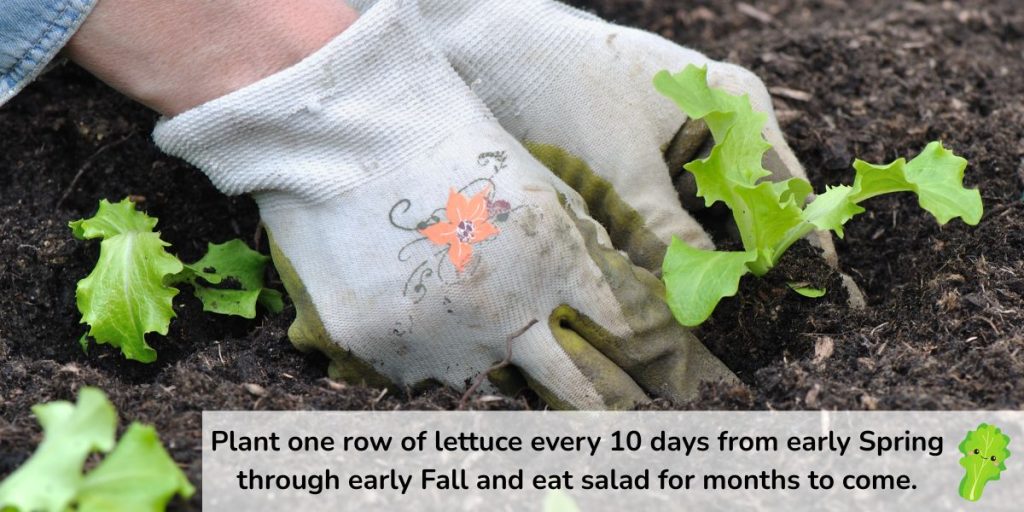
Succession planting is the practice of repeatedly sowing crops for continuous harvests. Several approaches work well to accomplish seasonal succession gardening:
Same Crop Succession
Plant the same crop every 1-3 weeks to ensure continuous harvests. Best for:
- Lettuce
- Radishes
- Bush beans
- Spinach
- Cilantro
Example Schedule: Plant one row of lettuce every 10 days from early spring through early fall for continuous salad greens.
Different Crop Succession
Follow one crop with another that matures at a different time.
Sample Succession Plan:
- Early Spring: Peas
- Summer: Bush beans
- Fall: Spinach
- Winter (protected): Mâche
Interplanting Technique to Use in All-Climate Gardening
Plant quick-maturing crops between slower-growing ones:
Example: Plant radishes between cabbage seedlings. Harvest radishes before cabbage, as it needs a lot of space.
Soil Management for Continuous Production

Year-round gardening places higher demands on soil fertility. Implement these practices:
Cover Cropping
Plant soil-building crops during transition periods:
- Winter Cover Crops: Cereal rye, hairy vetch, winter peas
- Summer Cover Crops: Buckwheat, cowpeas, sorghum-sudangrass
Cover crops prevent erosion, add organic matter, and some fix nitrogen.
Crop Rotation
Divide garden into sections and rotate plant families:
- Year 1: Leafy greens (lettuce, spinach)
- Year 2: Fruiting crops (tomatoes, peppers)
- Year 3: Root crops (carrots, beets)
- Year 4: Legumes (peas, beans)
This practice helps prevent disease buildup and balances nutrient use.
Ongoing Soil Building
- Apply compost between each major planting (1-2 inches)
- Use organic fertilizers as needed based on soil tests
- Maintain active compost system with garden and kitchen waste
- Consider vermicomposting (worm composting) for winter months
- Apply mineral amendments (like rock dust) annually
Four-Season Gardening Water Management
Effective water management varies seasonally:
Spring/Fall
- Monitor soil moisture as temperatures fluctuate
- Water newly planted seeds and transplants consistently
- Install rain barrels to capture seasonal precipitation
Summer

- Water deeply but infrequently to encourage deep root growth
- Apply mulch to reduce evaporation
- Consider drip irrigation for water conservation
- Water in early morning to reduce evaporation and fungal issues
Winter
- Water protected plants sparingly on sunny days
- Allow water to warm to ambient temperature before applying
- Focus watering at plant bases to avoid excess humidity in structures
- Monitor condensation in greenhouses and cold frames
Pest and Disease Management Throughout the Year
Each season brings different challenges:
Spring
- Monitor for slugs and snails as moisture increases
- Install row covers to protect young plants from insects
- Practice good sanitation to reduce overwintered pests
Summer
- Implement companion planting to confuse pest insects
- Use organic sprays like neem oil for acute problems
- Release beneficial insects for biological control
- Inspect plants regularly for early intervention
Fall
- Remove diseased plants promptly to prevent spread
- Apply compost tea to boost plant immunity
- Clear debris that could harbor overwintering pests
Winter
- Monitor humidity in protected structures to prevent fungal issues
- Remove yellowed or diseased leaves promptly
- Maintain good air circulation in greenhouses and cold frames
Seed Starting and Plant Propagation
A continuous supply of healthy seedlings is essential:
Year-Round Gardening Seed Starting Schedule
| Season | Start Indoors | Direct Sow | Transplant Outdoors |
|---|---|---|---|
| Winter | Onions, Leeks, Early Brassicas | None (except in greenhouse) | None |
| Early Spring | Tomatoes, Peppers, Eggplant | Peas, Spinach, Radishes | Cool-season transplants |
| Late Spring | Fall Brassicas | Beans, Corn, Summer Squash | Warm-season transplants |
| Summer | Fall Lettuces, Fall Spinach | Succession plantings | Fall crop transplants |
| Fall | Winter salad greens (for protection) | Cover crops, Garlic | Cold-hardy transplants |
Indoor Growing Setup
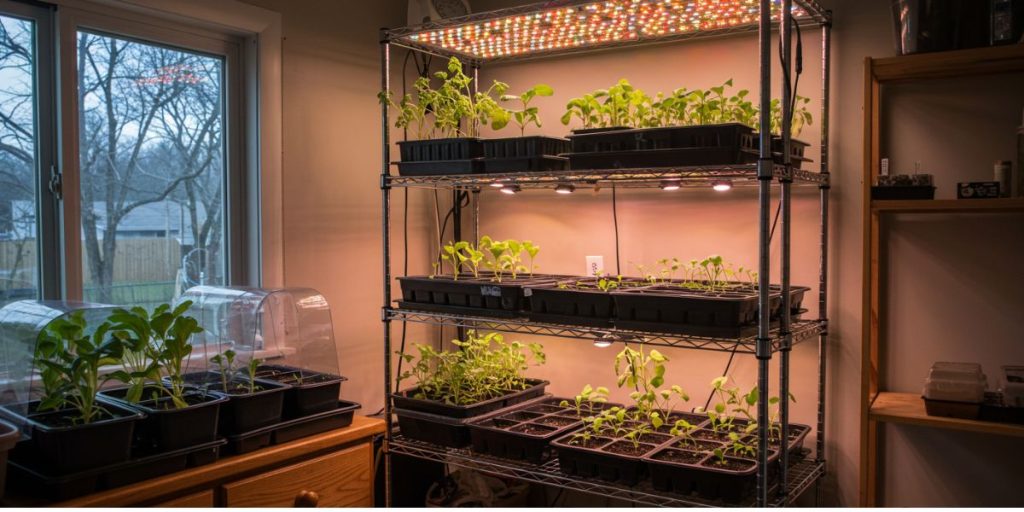
For year-round seedling production:
- South-facing window supplemented with grow lights
- Heating mats for warm-season crops
- Multi-tier shelving system with LED grow lights
- Simple humidity domes from recycled containers
Propagation Techniques for Self-Sufficiency
- Seed Saving: Collect and store seeds from open-pollinated varieties
- Cuttings: Propagate herbs and perennials from stem cuttings
- Division: Multiply perennial vegetables through root division
- Grafting: Advanced technique for fruit trees and some vegetables
Year-Round Gardening: Harvesting and Storage Strategies
Maximize your harvests with these approaches:
Harvest Timing
- Harvest leafy greens in morning for best flavor and storage
- Root crops can be harvested as needed or stored in ground with protection
- Pick continuously producing vegetables (beans, tomatoes) every 1-2 days at peak
Storage Methods for Self-Sufficiency
| Storage Method | Best For | Storage Life |
|---|---|---|
| Root Cellaring | Root vegetables, winter squash, apples | 3-6 months |
| Canning | Tomatoes, beans, pickles, jams | 1-2 years |
| Freezing | Berries, peppers, greens, herbs | 6-12 months |
| Dehydrating | Herbs, fruits, vegetables, mushrooms | 6 months – 1 year |
| Fermenting | Cabbage, cucumbers, other vegetables | 2-12 months |
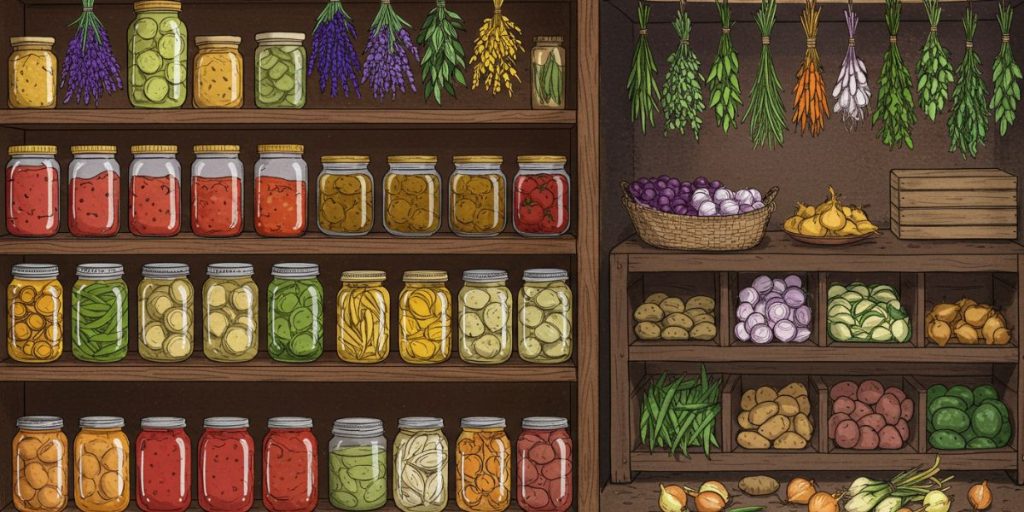
Advanced Year-Round Gardening Techniques
Once you’ve mastered the basics, consider these advanced approaches:
Microclimates and Garden Design
- Create suntraps with reflective surfaces and thermal mass
- Use stone walls or water features to moderate temperatures
- Plant windbreaks to protect sensitive areas
- Utilize slope aspects for different growing conditions
Continuous Harvest Gardening With Biointensive Methods
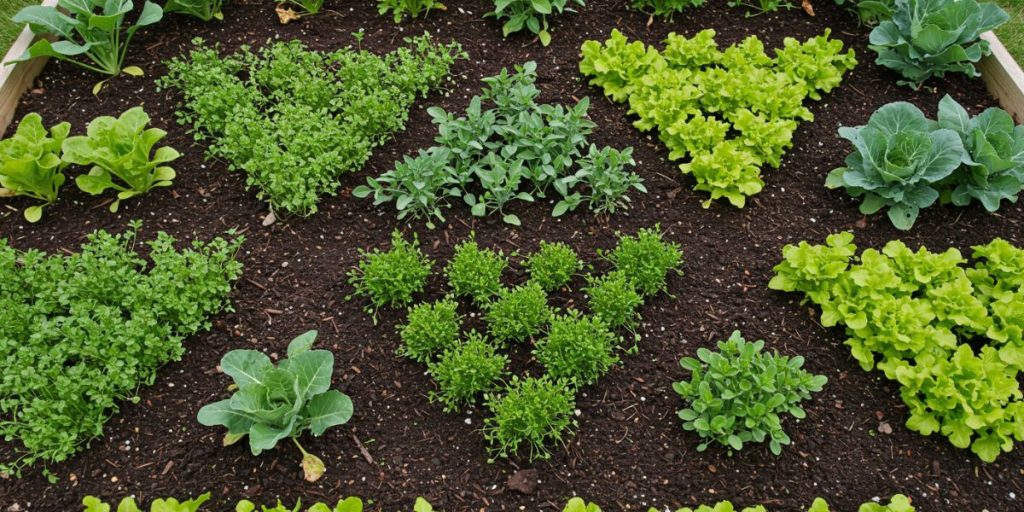
- Practice close plant spacing in triangular patterns
- Double-dig beds for increased root depth
- Compost all garden waste for complete nutrient cycling
- Focus on calorie-dense crops for food security
No-Dig Gardening
- Layer organic materials to build soil without tilling
- Plant through compost layers for reduced weed pressure
- Maintain permanent beds with defined pathways
- Add compost as a top dressing rather than digging in
Incorporating Permaculture Principles
- Observe and interact with your garden’s unique patterns
- Create functional zones based on use frequency
- Stack functions (e.g., trellises that provide shade and growing space)
- Design for multiple yields from each element
Troubleshooting Common Year-Round Gardening Challenges
| Challenge | Possible Causes | Solutions |
|---|---|---|
| Poor germination in winter | Cold soil, old seeds | Use heating mats, fresh seeds, pre-sprout indoors |
| Leggy seedlings | Insufficient light, overcrowding | Increase light, thin seedlings, lower temperatures |
| Frost damage despite protection | Inadequate coverings, extreme cold | Double layer protection, add thermal mass, choose hardier varieties |
| Summer crops struggling in heat | Water stress, excessive temperatures | Shade cloth, consistent watering, heat-tolerant varieties |
| Pests in protected structures | Overwintering, poor air circulation | Remove affected plants, increase ventilation, introduce beneficial insects |
| Low winter production | Insufficient planning, inadequate light | Start fall crops earlier, choose appropriate varieties, supplement light if necessary |
Record Keeping for Future Success
Maintain detailed garden records – examples include:
- Planting dates and varieties used
- Harvest quantities and timing
- Pest and disease occurrences
- Weather patterns and their effects
- Succession planting schedules
- Season extension effectiveness
- Notes on flavor and performance
These records become so helpful for improving your system year after year. Because you cannot possibly remember every little detail, keeping track along the way will make your future self very happy.
Conclusion: The Path to Year-Round Gardening for Self-Sufficiency
Developing a four-season garden is a journey that unfolds over several years. Each season teaches valuable lessons about your specific microclimate and growing conditions. By implementing the techniques in this guide, you’ll gradually increase your garden’s productivity throughout all four seasons.
Remember that year-round gardening doesn’t mean equal production in all seasons. Winter harvests will typically be smaller than the overflowing buckets in summer (I need to be more grateful and less overwhelmed when this happens), but even modest winter harvests represent significant steps toward food independence. The goal is continuous production and learning to work with, rather than against, the natural rhythms of the seasons.
As you develop your year-round gardening system, you’ll not only enjoy fresh vegetables throughout the year but also build essential self-sufficiency skills that reduce your dependence on external food systems. This resilience is the true measure of success in year-round vegetable gardening for self-sufficiency.
Resources for Continued Learning
Recommended Books
- “The Four-Season Harvest” by Eliot Coleman
- “The Year-Round Vegetable Gardener” by Niki Jabbour
- “Winter Harvest Handbook” by Eliot Coleman
- “Sustainable Market Farming” by Pam Dawling
- “What Your Food Ate” by David R. Montgomery and Anne Biklé – my personal favorite!
Online Resources
- Your local extension office’s planting calendars
- USDA Plant Hardiness Zone Map
- Farmer’s Almanac frost date calculator
- National Gardening Association growing guides
By applying the principles and techniques outlined in this guide, you’ll be well on your way to establishing a productive, year-round garden that supports your journey toward greater self-sufficiency.


